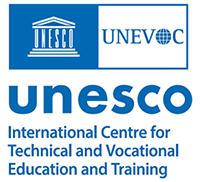
The UNESCO-UNEVOC International Centre: Who We Are | What We Do | Working With Us | Get in Touch
The UNEVOC Network: Learn About the Network | UNEVOC Network Directory
For Members: UNEVOC Centre Dashboard
Thematic Areas: Inclusion and Youth | Digital Transformation | Private Sector Engagement | SDGs and Greening TVET
Our Key Programmes & Projects: BILT: Bridging Innovation and Learning in TVET | Building TVET resilience | TVET Leadership Programme | WYSD: World Youth Skills Day
Past Activities: COVID-19 response | i-hubs project | TVET Global Forums | Virtual Conferences | YEM Knowledge Portal
Our Services & Resources: Publications | TVET Forum | TVET Country Profiles | TVETipedia Glossary | Innovative and Promising Practices | Toolkits for TVET Providers | Entrepreneurial Learning Guide
Events: Major TVET Events | UNEVOC Network News
3-D printing is a manufacturing process that builds layers to create a three-dimensional solid object from a digital model. To print a 3-D object, the manufacturer uses a computer-aided design (CAD) program to create a digital model that gets sliced into very thin cross-sections called layers. During the print process, the 3-D printer starts at the bottom of the design and builds up successive layers of material until the object is finished.
The process, performed by machines, of creating physical objects from three-dimensional digital models, generally by laying down successive layers of material. In manufacturing, the more common term is additive manufacturing (AM).